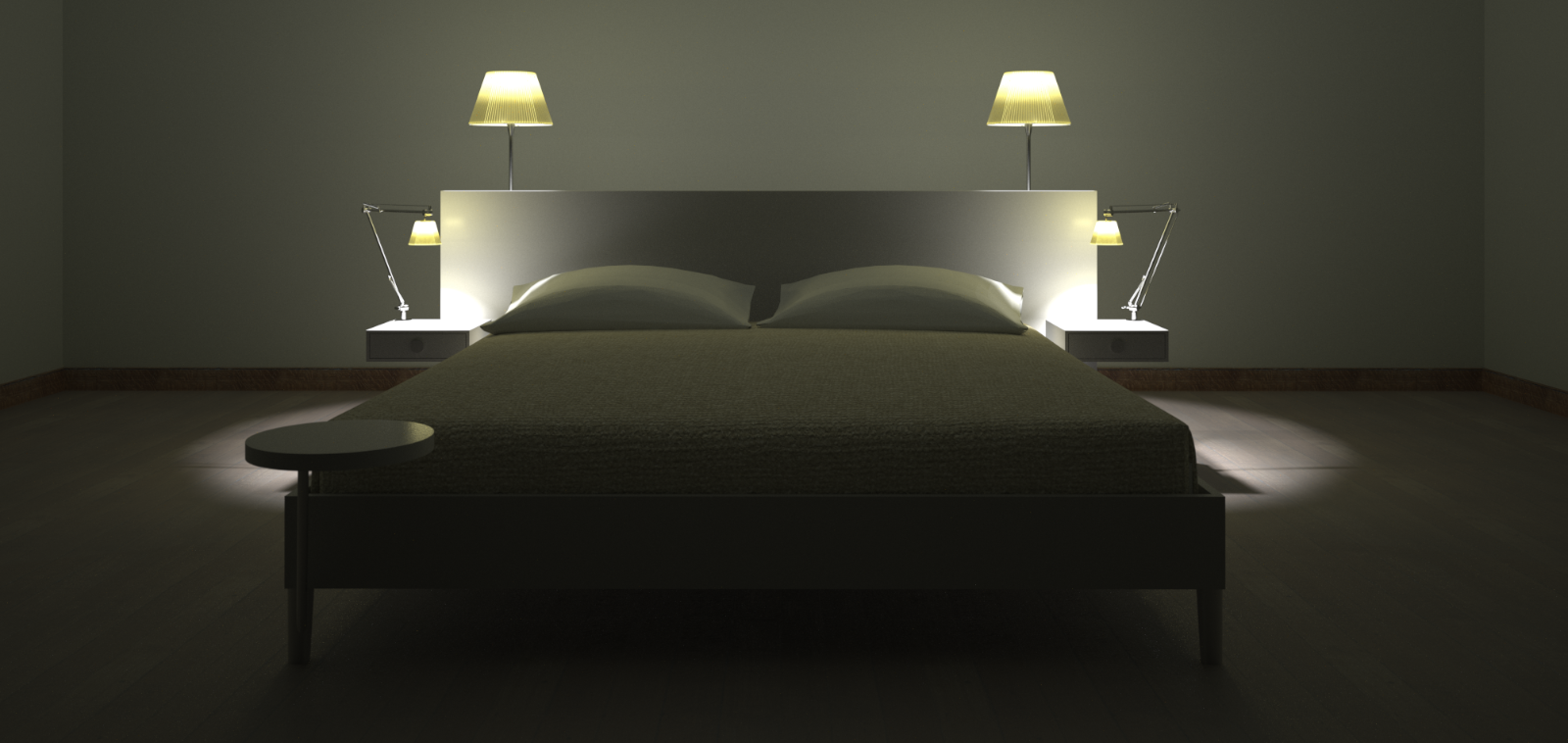Preparing A Lamp for Maxwell
-
I am in the process of laboriously preparing high poly models for maxwell. I find a website in this case Phillipe Stark sign up and download a .3ds file. Importing .3ds is a royal pain in the a** at the best of times. Sometimes geometry is corrupted, so as a work around i usually bring it in at a higher scale say metres then scale it back down inside sketch up to centimetres. This works fine in most cases. Then because the component has been scaled i need to explode and re-group all the internal and mother object. I usually run the clean up ruby at this stage as well. So far everything is working nicely although the import times, exploding and re-grouping times are really crippling ! I think this is a single processor intensive operation and could really be helped by making the sketch up app multi processor aware ?
Now i have hit a wall concerning lamps. I have been experimenting for some days on this one. The lamp i am working on is attached in it's original form, after scaling , cleaning & smoothing.
Brodie, Jason i'd love to see your approach on this one ? I am guessing the high poly shade is not really helping in this instance ? To see the bulb & the shade i have to use an sss material ? I have been modifying various versions of this light trying to get that benchmark score up, to no avail as yet !
-
SSS like all dielectrics will be slow to render (benchmark speed), true SSS is probably the slowest normal material for Maxwell to render due to the extra-complex nature of the calculations.
Instead I recommend that you use the the thin-SSS Ghost technique I show here:
In this case you do not need to model thickness for the SSS effect because that is simulated via thinSSS "thickness", in a way this operates on a similar principle to the wizard "Clear AGS"... However this cannot be made via the stand-alone plugin and must be done as I show in MXED.
I show the technique in a few different examples and it works well for everything except solid colors -- you really need a texture for all the relevant slots to make it work right.
Hopefully in the near future you can just create a MXS file from the 3DS file (by importing to Maxwell Studio) and then use the MXS file inside SketchUp as a MXS reference -- which would alleviate all the headaches involved in the processing you outlined.
Best,
Jason. -
Thanks for the answer Jason, i am aware that studio opens 3ds files natively albeit in 32 bit mode. However i am not so at home in studio as sketchup. I also have a problem with scale in studio only the grid helps this. Also if i want to adjust any of the geometry your sort of stuck. Thanks for the link i'll take a look. I have basically rebuilt the entire light in sketch up now and i'm getting an even lower benchmark ! Just how good an indicator is the benchmark ? Low is bad right ? I'm guessing a zero score will render infinitely ? My new file weighs half of the original .3ds conversion but it renders slower arghhhhhh..........
-
I can't look at your files right now -- today is a deadline day for me... however you must remember that Maxwell loves polys.
So while you may be doing favors for SketchUp with all that editing you are doing no favors at all for Maxwell.
Believe me, when MXS referencing comes to the SketchUp plugin (soon) you will want to be conversant in doing what you need inside Maxwell Studio -- MXS referencing will be a game-changer for SketchUp users... unlocking astronomical poly-counts and simplifying workflows for any object such as this.
It will pay to get comfortable in there now, so you are not playing catch-up later.
Best,
Jason. -
Super advice Jason thanks a lot. That's very interesting news, about mxs referencing, because if i understand you right poly optimization helps sketch up & hinders maxwell. Hopefully Brodie and others will chime in at some point, good luck with the deadline.
-
I've heard other Maxwell users (non-SketchUp users) insist that the geometry that SketchUp produces is not suitable for Dielectrics, SSS, etc (these are SubD modelers talking).
I don't buy that, but certainly the normal way of Modelling in SketchUp is not suitable -- to get good results from SSS and Dielectric materials you need to model at the type of extremely high poly-counts that makes SketchUp handle like a beached whale... but it can be done.
Best,
Jason. -
That advise is gold dust i just doubled the geometry in sketch up and the benchmark doubled ! I would never in a million years have guessed that was the case. None of my experiments ever considered more geometry ! It seems the 2 softwares are operating at opposite paradigms.
I hope 3ds max come to the mac this year it will solve my workflow problems. Importing 3ds files is a nuisance in sketch up it has to convert everything.
Now i am starting to think the plugin should subdivide all the geometry before it hits maxwell this would be the best of both worlds, half an hour spent sub-dividing a scene would save days of render time. -
Here is an update, the emitter was a single plane at the top of the shade 3cm square. I think the effect is quite successful although i'd like to have seen a bulb as the source.

Advertisement







